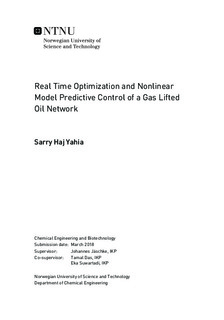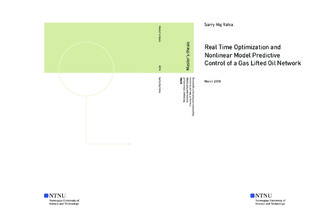| dc.description.abstract | As oil reserves become scarcer, oil production and recovery must be enhanced. The gas lift is one of the techniques used to enhance oil production and recovery. It is usually used in reservoirs that suffer from insufficient production rates because of inadequate reservoir pressures. The gas lift injects gas, from external sources, into the fluid mixture flowing out of the reservoir. This in turn will reduce the density of the fluid which enables the reservoir pressure to lift the mixture to the top. Thus, the gas injection increases the production rates of the oil. However the maximum gas injection does not necessarily lead to maximum production of fluid or oil. Thus, gas injection can be both advantageous and disadvantageous.
This thesis investigates a gas lifted network consisting of 3 wells and a riser. Nonlinear dynamic equations were derived for the mass of liquid and gas using the outflow rates from different component of the network. The mathematical model used to describe the system takes into consideration a three phase system consisting of oil, water and gas. In addition, the model uses a simplified equation to represent the friction in the tubing. For simulation purposes, the mathematical model was formulated as a system of differential algebraic equations (DAEs) and simulated in Matlab
In this thesis, a real time optimization (RTO) problem is built to find the optimal steady state solutions for a given objective. The objective considered is the maximization of liquid and minimization of gas injection. In addition, a nonlinear model predictive control (NMPC) is applied to the plant to operate and track the solutions produced by the RTO. Both the RTO and NMPC optimization problems built are solved using CasADi software.
The simulation studies have been carried out to test the open loop response of the plant and the RTO steady states optima. Further, the NMPC sensitivity to measurement noise is investigated. Finally, NMPC robustness with respect to parameter changes in the closed loop structure is studied and analyzed. The analysis and simulations show that the simplified gas lift model represents the system dynamics as expected. In addition, the NMPC built in this system is sensitive for highly noisy measurements while it is accurate and stable for slightly noisy measurements. Finally, the control structure of the entire gas lifted network is able to adapt to new optimal operations when subject to disturbances. This is beneficial for future work when considering optimizing the quality of production. | |

